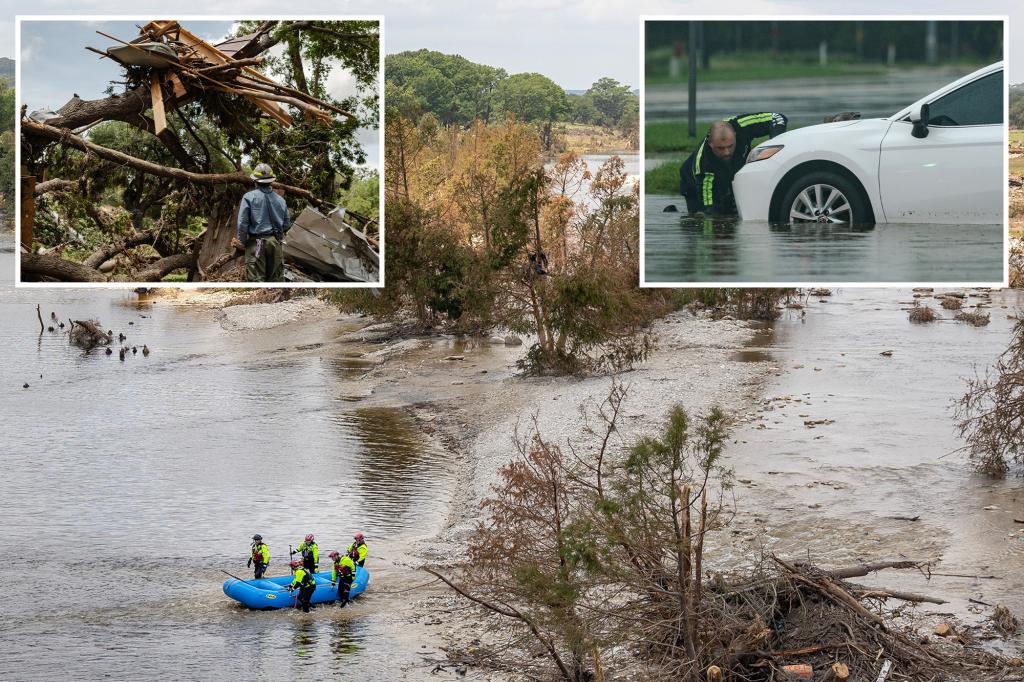Unraveling the Sinkhole Surge: Understanding Their Rising Frequency
In recent years, sinkholes have become a startling phenomenon, capturing attention across various media platforms. These sudden depressions in the ground not only pose risks to infrastructure and safety but also raise questions about the geological and environmental factors contributing to their increasing prevalence. This article aims to unravel the sinkhole surge by examining the underlying causes and implications of this unsettling occurrence.
The Science Behind Sinkholes
To understand why sinkholes are surging, it’s essential to grasp the science behind their formation. Sinkholes typically occur in areas where the bedrock is composed of limestone, gypsum, or salt. These materials are soluble, meaning they can be eroded by water over time, creating underground voids. When the ground above these voids can no longer support its weight, it collapses, forming a sinkhole.
Types of Sinkholes
There are several types of sinkholes, each with distinct characteristics:
- Collapse Sinkholes: These are the most common type and occur suddenly when a surface layer gives way.
- Cover Collapse Sinkholes: They develop when soil and debris cover an underground cavity, leading to a collapse.
- Solution Sinkholes: Formed by the gradual dissolution of rock due to water, these sinkholes may take years to develop.
Geological Factors Contributing to the Sinkhole Surge
The increasing frequency of sinkholes can be attributed to various geological factors:
1. Urbanization and Land Use Changes
As cities expand and more land is developed, the natural drainage patterns are disrupted. Construction activities can lead to soil compaction and increased water runoff, which can exacerbate the dissolution of soluble rock. This process can accelerate the formation of sinkholes, particularly in areas with pre-existing vulnerabilities.
2. Climate Change and Extreme Weather
Climate change is another significant factor influencing sinkhole activity. Increased rainfall and severe weather events can lead to higher groundwater levels, promoting the erosion of bedrock. Studies have shown that heavy downpours can saturate the soil, increasing the risk of collapse in vulnerable regions. For instance, areas experiencing prolonged drought followed by heavy rain may see a surge in sinkhole incidents as the ground shifts under the sudden influx of water.
3. Groundwater Extraction
Over-extraction of groundwater for agricultural and urban use can also contribute to sinkhole formation. When water is removed from underground aquifers at unsustainable rates, it can lead to ground subsidence. This not only increases the likelihood of sinkholes but can also result in permanent changes to the landscape.
Human Activity and Its Impact
Human actions play a crucial role in the rising frequency of sinkholes. The following activities are particularly impactful:
1. Mining Operations
In regions where mining is prevalent, the extraction of minerals can lead to significant disturbances in the ground. The removal of large volumes of material can create voids, increasing the risk of sinkhole formation. Additionally, the use of explosives in mining can weaken the structural integrity of surrounding rock.
2. Poor Infrastructure Maintenance
Inadequate maintenance of drainage systems and roads can lead to water pooling and increased erosion. Aging infrastructure may not withstand heavy rains, causing localized flooding that can erode the soil and contribute to sinkhole development.
Implications of Rising Sinkhole Incidents
The surge in sinkholes has far-reaching implications for communities, economies, and the environment. Here are some key areas affected:
1. Safety Hazards
Sinkholes pose immediate risks to public safety. Sudden collapses can endanger lives and damage property. For example, a sinkhole that appeared in a busy roadway can result in accidents, injuries, or even fatalities.
2. Economic Consequences
The economic impact of sinkholes can be substantial. Repairing damaged infrastructure, such as roads, bridges, and buildings, requires significant financial investment. Additionally, the property value of areas prone to sinkholes may decrease, affecting homeowners and local businesses.
3. Environmental Effects
Sinkholes can disrupt local ecosystems, altering habitats and water flows. When a sinkhole occurs, it can create new ponds or alter the flow of groundwater, impacting the flora and fauna in the area. Furthermore, contaminants from the surface can enter the groundwater system through sinkholes, negatively affecting water quality.
Preventive Measures and Solutions
While sinkholes cannot be entirely prevented, several measures can mitigate their risks and impacts:
1. Improved Urban Planning
Effective urban planning that considers geological assessments can help identify high-risk areas and guide development away from them. Incorporating green spaces and sustainable drainage systems can also enhance water management.
2. Regular Monitoring and Maintenance
Regular inspections of infrastructure, particularly in known sinkhole-prone areas, can help identify early signs of ground instability. Maintenance of drainage systems is crucial to prevent water accumulation.
3. Public Awareness and Education
Educating the public about the risks associated with sinkholes and how to respond can save lives. Communities should be informed about local geological conditions and encouraged to report any signs of ground subsidence.
Conclusion: Embracing a Proactive Approach
As we unravel the sinkhole surge, it becomes evident that a combination of geological, environmental, and human factors is at play. While the increasing frequency of sinkholes presents challenges, understanding their causes allows us to adopt a proactive approach to mitigate risks. Through improved urban planning, regular monitoring, and public education, communities can better prepare for and respond to this unsettling phenomenon. Together, we can strive for safer environments and sustainable solutions in the face of rising sinkhole incidents.
See more Your Daily Weather



